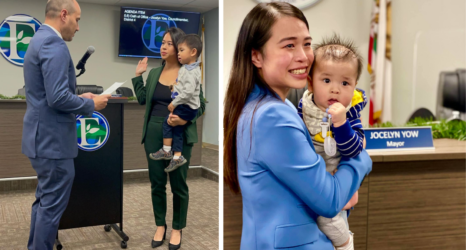The President’s bellowing about a “tremendous economy” and “rising wages” can’t mask the economic fact: Women are still feeling the brunt of financial pain in the country. According to a poll by Greenberg Research, voters know that there are more jobs in this economy and that they should be feeling more financially secure, but women especially are still having a tough time making ends meet.
The persistent gender pay gap, increasing costs of health care and housing, workplace policies that ignore their rights and dignity, and the increasing student debt burden all undermine women’s economic stability and their ability to provide for themselves and their families. But the true blame for why women aren’t getting ahead lies somewhere between these factors and the policies that the Trump administration is pushing that weaken and reverse the substantial gains women made over the past decade.
The traditional measure of the wage gap finds that nationally, women are paid 80.5 cents for every dollar a white man is paid. Black women and Latinas receive, respectively, 63 cents and 54 cents on the dollar. But looking at only a snapshot of monthly or annual wages does not paint the full picture. Economists Emmanuel Saez, Thomas Piketty and Gabriel Zucman developed a more comprehensive calculation that looks beyond gender differences in wages and salaries to additionally calculate gender differences in labor-force participation and benefits—like pension contributions, employer health insurance, paid leave and disability insurance, as well as commissions and bonuses.
Using this broader income calculation, the economists found that today women receive only 57 cents to a man’s dollar—and the disparities are worse for women of color, who have the widest income gap be cause they face an additional race gap. Women feel the ramifications of this income gap throughout their working lives, from their first job, when they are paid 6.6 percent less on average than men, and continuing until the day they retire, when the cumulative effect of pay discrimination hits them hard. In 2017, the average monthly benefit for women who received Social Security was $1,277— or 78 percent of the average monthly benefit for men of $1,633. The gap matters, since most women depend on Social Security payments in their older years: Half of retired women rely on Social Security for at least 80 percent of their income.
Closing the income gap should be a national economic priority. According to the Institute for Women’s Policy Research, if women were paid the same as men, the poverty rate among working women would decrease from the current 8 percent to 3.8 percent, and 2.5 million children would no longer live in poverty.
Rigorous enforcement of Title VII, which prohibits sex and race-based discrimination in employment, and other equal pay laws already on the books would directly target the pay gap. But rather than enhancing the ability of the Labor Department and the Equal Employment Opportunity Commission (EEOC) to investigate and enforce pay discrimination laws, the Trump administration has taken steps to undermine the federal government’s ability to close the gap and improve women’s economic status.
Some members of Congress, meanwhile, are pushing legislation that would allow businesses to skirt state and local laws that mandate paid sick days. Already 43 percent of women workers in the U.S.—and 73 percent of those in low-wage jobs, in the bottom 10 percent—do not have access to even one day of paid sick leave. Congress is also ignoring proposals to address what sociologists have shown is a factor in driving the pay gap: motherhood. Moms, on average, earn $1,100 less each year than dads per child, and an average mom receives 60 cents on a dad’s dollar. Clearly the availability of paid leave and affordable quality child care would be a powerful remedy, not only in closing the pay gap, but also in retaining women in the workforce so they avoid a break in earning power.
Of U.S. workers, only 15 percent have paid family leave access via their employers. And only about 60 percent of workers have access to the job protections of unpaid leave under the Family and Medical Leave Act. Ivanka Trump says that family policy and, specifically, paid leave are a priority, but her father’s administration has taken no action, despite plenty of opportunities to require paid sick leave and family leave through executive orders and under the so-called tax reform bill.
When you look beyond the president’s blusters, it’s clear: These economic policies hurt women workers, especially low-income women of color. These policies are cruel, inhumane and harmful to millions of women and children.





